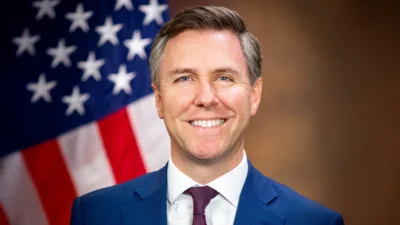Energy and Commerce Chairman Frank Pallone, Jr. (D-NJ) delivered the following opening remarks at an Oversight and Investigations Subcommittee hearing on ““Flu Season: U.S. Public Health Preparedness and Response:"
Every year, Influenza causes millions of illnesses, hundreds of thousands of hospitalizations, and tens of thousands of deaths across the United States. Last year, more than 100 children died as a result of this preventable and treatable disease. And while we are still in the early months of this year’s flu season, it has already resulted in the deaths of five children.
Today, we are continuing this Committee’s long history of examining flu preparedness and response. The flu is one of many preventable infectious diseases that threaten public health.
We know that seasonal flu is particularly challenging to address. Flu viruses are mutating and changing constantly, and we do not yet have the ability to predict how severe a flu season will be, when it will peak, or what flu strains will dominate.
We also still have a lot of questions about why the flu vaccine is more effective for some people, and how someone’s health status may affect the body’s immune response.
I have been encouraged by recent efforts at the National Institutes of Health (NIH) to study these issues, with the goal of producing a universal flu vaccine that is effective against a broader range of flu strains. I am also encouraged by the ongoing research supported by the Biomedical Advanced Research and Development Authority, or BARDA, and the ongoing leadership and coordination among all of the agencies testifying before us today.
These efforts are vitally important. While we wait for the results of this research, it is critical that we continue to stress the importance of getting vaccinated every year.
Thankfully, cost should no longer be a barrier for anyone to receive their annual flu vaccine. Thanks to the Affordable Care Act, flu and other immunizations are required to be covered by health insurance at no cost to the patient. The Vaccines for Children Program has also been providing free vaccinations for eligible children for nearly 25 years.
Annual flu vaccination is the best method for preventing flu and its potentially severe complications.
This is true even when the flu vaccine is less effective for various strains. For example, during the 2017-2018 season, the effectiveness of that year’s flu vaccine was estimated at 40 percent overall, yet the Centers for Disease Control and Prevention (CDC) estimated that it still prevented over six million illnesses, 91,000 hospitalizations and 5,700 deaths.
Vaccinating yourself not only increases the odds that you won’t get sick this season, but it also protects everyone you come in contact with. This is particularly important for those more vulnerable to the flu and its symptoms, such as people with chronic health conditions, older parents, or a baby niece or nephew.
All of this demonstrates the importance of getting a flu shot, but unfortunately 55 percent of adults were not vaccinated against the flu last season. I look forward to hearing from the CDC about its communication and outreach strategies to increase the rates in the future.
I know that one of the issues continues to be public confidence in vaccines, but it’s critical that we continue to get the word out that vaccines are safe. While harmful misinformation campaigns continue to proliferate online and in communities across the country, the agencies must continue to spread the message of vaccine safety.
We must also continue to improve our vaccine manufacturing process to make flu vaccines even more effective, and our ability to treat patients if they do come down with the flu.
I thank our witnesses for joining us today, and for the critical leadership role your agencies play in our nation’s flu preparedness and response efforts.




